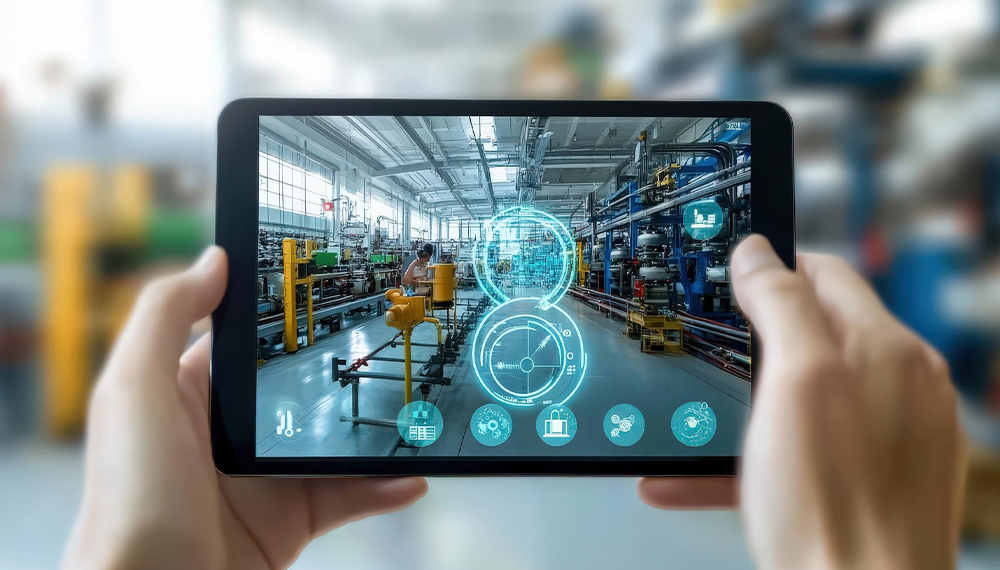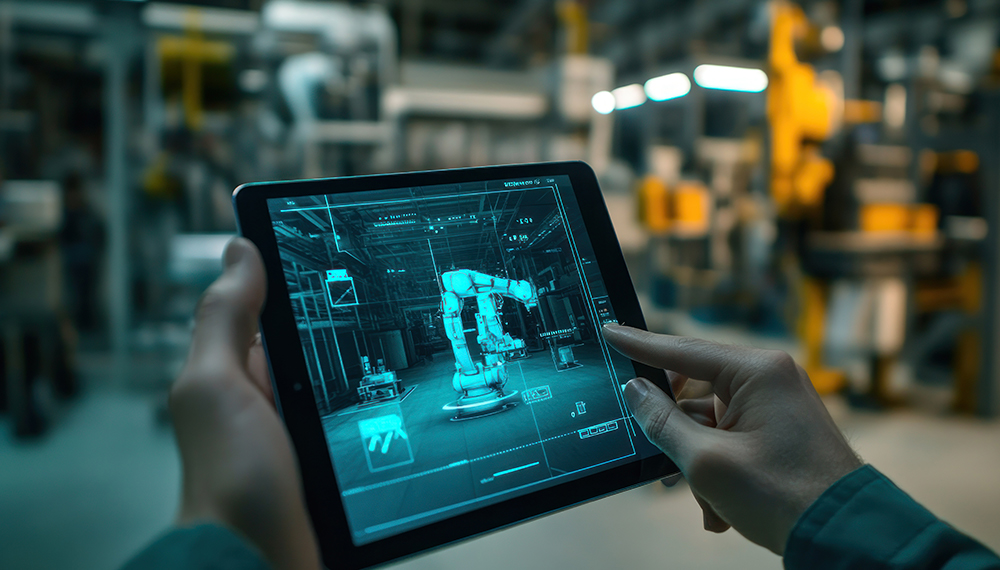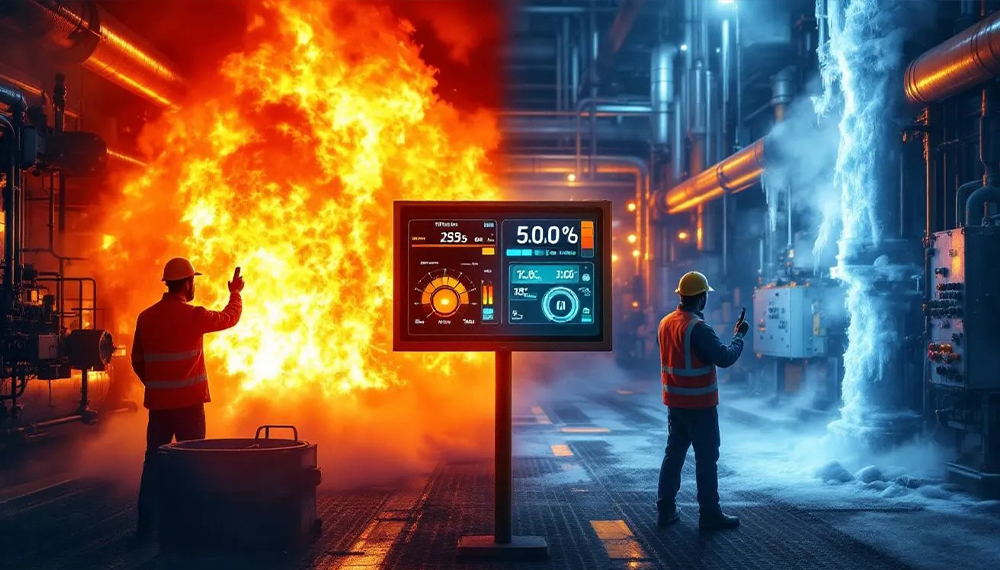Factories in India are changing fast. What once relied only on heavy machines and human labor is now powered by data, sensors, and digital tools. Among all the new technologies, AR apps for factory management in India are gaining the most attention. These tools merge real-world environments with digital layers, helping workers, supervisors, and managers see their machines and shop floors in a completely new way.
In this article, we’ll explore how AR is being used in factories, why it matters for India’s growing industries, and what strategies make these tools so powerful.
Why AR Matters in Indian Factories
Blending the Physical and Digital
Factories run on machines, and every machine has a story to tell. With AR apps for factory management in India, those stories come alive through real-time overlays. Temperature, pressure, vibration, or even error codes can appear on a worker’s screen instantly when they scan the equipment. This reduces guesswork and saves precious time.
Solving the Challenge of Legacy Machines
Many Indian plants still use older machines. Replacing them can be expensive and risky. One hidden strategy of leading AR solutions is their ability to “plug into what you already have.” Instead of discarding legacy machines, AR apps simply connect to them with IoT sensors. Workers then get live data through AR without changing the entire setup.
Key Strategies Behind AR Apps
Low-Code and No-Code Flexibility
Not every factory has a large IT team. That’s why successful AR apps for factory management in India often come with low-code or no-code tools. This lets plant managers create alerts, workflows, and dashboards without writing complex software. It’s like setting up rules in a simple app, only here the stakes are much higher—keeping machines healthy and workers safe.
Predictive Maintenance as a Secret Weapon
Downtime is a factory’s biggest enemy. One hidden strategy that AR platforms use is predictive maintenance. By analyzing data patterns, they can warn teams of unusual activity before a machine breaks down. Imagine getting an alert on your AR screen that says, “This motor may overheat in 24 hours.” That kind of foresight can save lakhs of rupees.
Use Cases Transforming Indian Industry
Safer Workplaces
Factory floors can be dangerous. Sharp edges, hot surfaces, or moving parts can all cause accidents. With AR apps for factory management in India, safety zones and compliance steps can be projected directly into a worker’s view. Instead of flipping through paper manuals, workers see instructions layered on the equipment itself.
Smarter Training for New Workers
Every year, thousands of young workers enter the Indian manufacturing sector. Training them is often time-consuming. AR makes the process faster. Step-by-step instructions and SOPs appear on the machines themselves, letting new workers learn by doing. It’s like having a digital guide standing beside them.
Connected Dashboards for Managers
While workers see AR overlays on the floor, managers need a bird’s-eye view. Another hidden strategy of these apps is their integration with smart dashboards. From one screen, managers can see machine health, performance graphs, alerts, and even geo-tagged maps of their plants. This makes decision-making much quicker and more data-driven.
Trends Driving Adoption in India
Affordable Technology
Not long ago, AR seemed futuristic and expensive. But today, smartphones and tablets are enough to run AR apps for factory management in India. This affordability makes it easier for small and mid-sized factories to join the digital wave.
Edge Computing and Offline Mode
India has many factories in areas with poor internet. That’s why another growing trend is offline functionality. Some apps are moving toward edge computing, where data is processed locally without needing constant internet. This is especially helpful in remote industrial zones.
Multilingual Support
India’s workforce is diverse. From Tamil Nadu to Punjab, workers speak different languages. AR apps are beginning to offer multilingual support, so instructions and alerts can be displayed in the language workers understand best. This small but powerful feature improves adoption and reduces errors.
The Hidden Impact: Culture Shift in Factories
From Reactive to Proactive
For decades, factories in India followed a “fix it when it breaks” culture. Now, with AR apps for factory management in India, the shift is toward being proactive. Machines are monitored continuously, risks are predicted early, and downtime is minimized.
From Manual Records to Digital Twins
Traditionally, data was logged in registers. Today, machines can have “digital twins” created through AR and IoT. This allows supervisors to see the exact condition of a machine without touching it. It’s a mindset change that puts data at the heart of every decision.
What’s Coming Next
The journey of AR apps for factory management in India is just beginning. Future features may include voice-activated AR, where workers can ask questions hands-free, or even wearable glasses that display dashboards right in their line of sight. As technology becomes cheaper and more powerful, adoption will only grow across sectors like automotive, pharmaceuticals, and textiles.
Final Thoughts: Choosing the Right Partner
The rise of AR is not about replacing humans, but about empowering them. By connecting IoT sensors, creating easy dashboards, ensuring safety, and preparing for predictive maintenance, these apps are redefining how factories operate in India.
If you are exploring AR apps for factory management in India, the smartest step is to look for a solution that:
- Works with legacy machines
- Offers real-time overlays and dashboards
- Provides low-code/no-code customization
- Ensures worker safety through compliance overlays
- Has a clear roadmap for offline mode, multilingual support, and predictive features
Brands that combine these strategies are not just selling software; they are shaping the future of Indian manufacturing.




